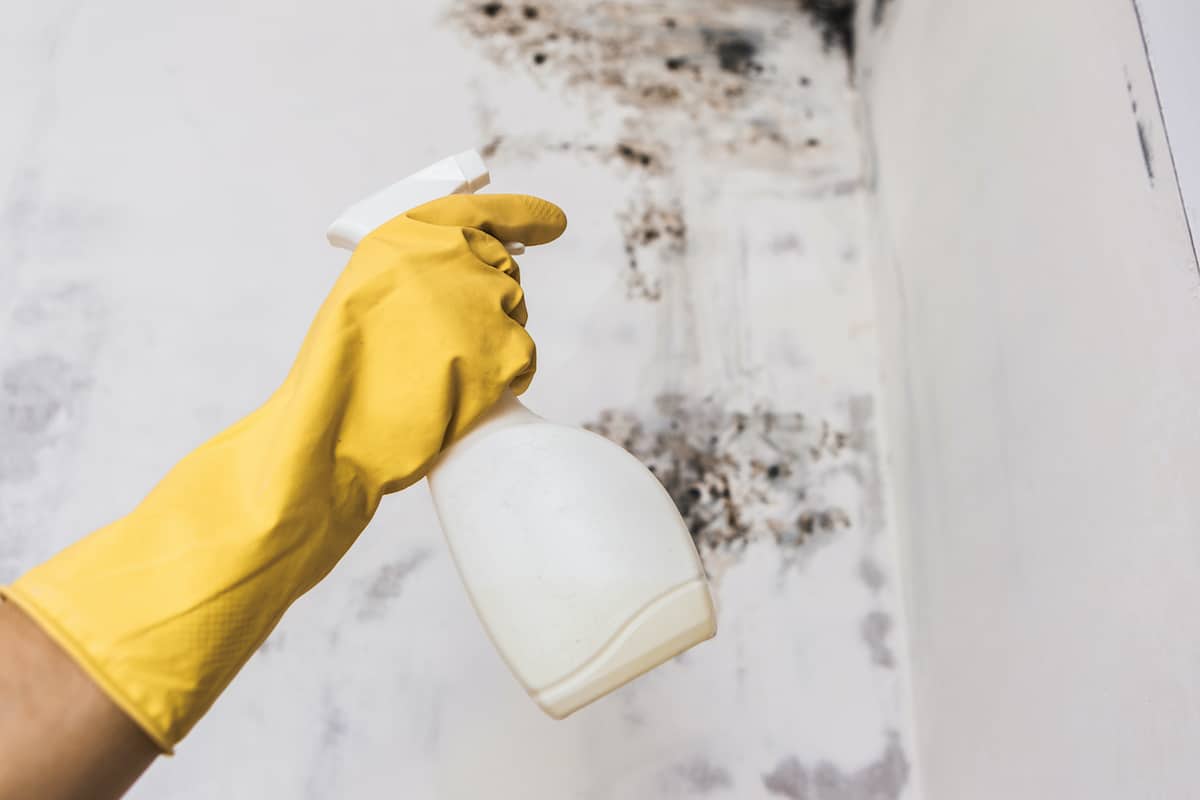Why Mold In Your Kitchen Sink Deserves Your Attention
Mold in your kitchen sink isn’t just an annoying eyesore; it can be a hidden danger to your health and home. The damp and often warm environment of a kitchen sink makes it the perfect spot for mold to grow. Left untreated, this mold can spread to other areas of your kitchen and even affect the air quality of your home. While cleaning a sink may seem simple, understanding why mold forms and how to remove it effectively can save you a lot of time and trouble.
Why Is Mold In Your Sink Such A Big Deal?
Mold is not just gross; it can impact your health in ways you might not expect. Mold in your sink can produce allergens that may trigger reactions in sensitive individuals. You or your family might experience sneezing, runny noses, or itchy eyes without realizing mold is the culprit. In severe cases, mold exposure could lead to respiratory issues or aggravate asthma. This is particularly true for black mold, which is known to be toxic and harmful if inhaled over a prolonged period.
In addition to health risks, mold creates a musty smell in your kitchen, making it feel less inviting. A kitchen should be a clean and comfortable space for cooking and gathering, but mold can quickly turn it into an unpleasant area. Furthermore, mold doesn’t just stay in one place. If left unchecked, it can spread to your countertops, dish drying rack, or even get into the pipes, leading to bigger problems down the road.
What Is Mold Sling, And Why Does It Grow In Your Kitchen Sink?
The Nature Of Mold Sling: What Is It?
Mold sling is that slimy, sticky residue you often find clinging to your sink’s corners, drains, or even the underside of your faucet. It's not just mold but a combination of mold spores, bacteria, grease, and food particles. Over time, this buildup becomes a breeding ground for germs and unpleasant odors. You may not know the term “mold sling.” However, if you’ve spotted grayish-green gunk in a damp part of your sink, you’ve seen it before.
Mold sling is stubborn, and simply rinsing it away with water isn’t enough. It clings to surfaces, often in areas you can’t easily see or reach. That’s why understanding how it forms and how to tackle it properly is so important. The good news is, with some effort and the right tools, you can remove it and keep it from coming back.
Related: How To Permanently Remove Mold From Bathroom Ceiling?
Key Reasons Your Sink Becomes A Mold Haven
- Constant Moisture: Your sink is always wet, especially if you don’t dry it after use. Mold thrives in moist environments, and sinks are no exception. Even small amounts of water left in the corners or around the drain can encourage mold growth.
- Food Residue: Leftover crumbs, grease, and soap scum provide an excellent food source for mold. These residues often get stuck in the drain or cling to the sink’s surface, creating an ideal environment for mold to thrive.
- Poor Ventilation: A kitchen with no airflow traps humidity. It creates a perfect environment for mold. If your kitchen doesn’t have a vent fan or windows, it’s more likely to develop mold problems.
- Hidden Areas: The spaces under the sink, around the drain, and beneath the faucet can collect moisture and debris. They are ideal for unnoticed mold growth. These spots are often overlooked during routine cleaning, allowing mold to thrive and spread over time.
Why You Should Care About Mold In Your Sink?
Ignoring mold can lead to:
- Health Issues: Mold can trigger allergies, respiratory problems, and skin irritation. Black mold, in particular, is toxic and dangerous.
- Unpleasant Smells: Mold gives off a musty odor that can make your kitchen feel unclean, no matter how much you scrub.
- Spread of Mold: Mold can move from your sink to other parts of your kitchen, like countertops and dish racks.
By addressing mold early and taking preventative steps, you can avoid these issues and maintain a clean, healthy kitchen.
Related: How Do You Clean Mold Out Of Carpet? Tips And Tricks

Step-By-Step Guide To Removing Mold Sling From Your Kitchen Sink
Getting rid of mold slings doesn’t have to be overwhelming. With the right tools and steps, you can tackle this problem effectively. Follow this detailed guide to ensure you not only remove mold but also prevent it from coming back.
Step 1: Gather Your Cleaning Supplies
Before you begin, make sure you have everything you need. Here’s a list of cleaning supplies to have on hand:
- Rubber Gloves: Protect your skin from mold and cleaning chemicals.
- Scrubbing Brush or Toothbrush: A small brush is ideal for scrubbing tight corners and drains.
- Baking Soda: A natural cleaner that helps break down grime and mold.
- White Vinegar: An effective and eco-friendly mold remover.
- Hydrogen Peroxide: For tougher mold spots, this acts as a disinfectant.
- Dish Soap: Helps remove grease and grime that mold feeds on.
- Microfiber Cloth or Paper Towels: Essential for drying the sink after cleaning.
Step 2: Start With A General Cleaning
Before targeting the mold, clean the sink to remove grease and grime:
- Put on your rubber gloves to protect your hands.
- Mix warm water with dish soap in a bucket or bowl.
- Use a scrubbing brush to clean the sink’s surface, focusing on areas with visible dirt or grease.
- Rinse the sink thoroughly with warm water.
- Dry the sink using a microfiber cloth or paper towels to remove any remaining moisture.
Step 3: Use Baking Soda And Vinegar For Deep Cleaning
Baking soda and vinegar are natural, effective cleaning agents that work wonders on mold. Here’s how to use them:
- Sprinkle a generous amount of baking soda over the moldy areas of your sink. Make sure to cover all visible spots.
- Fill a spray bottle with white vinegar and spray it over the baking soda. You’ll notice a fizzing reaction, which helps break down the mold and grime.
- Let the mixture sit for 10-15 minutes to loosen the mold.
- Use a toothbrush or scrubbing brush to scrub the affected areas. Focus on corners, drains, and any other spots where mold might be hiding.
- Rinse the sink thoroughly with warm water to remove the baking soda and vinegar.
Step 4: Disinfect With Hydrogen Peroxide
For persistent mold spots, hydrogen peroxide is a powerful disinfectant:
- Pour hydrogen peroxide onto a clean cloth or sponge.
- Apply it directly to the moldy areas and let it sit for 15-20 minutes. This step kills mold spores and prevents them from spreading.
- Scrub the area again with your toothbrush or scrubbing brush.
- Rinse the sink with warm water to remove any residue.
Step 5: Dry Thoroughly
Use a microfiber cloth to dry the sink completely. Mold thrives in moisture, so this step is crucial to prevent regrowth. Pay special attention to corners, drains, and areas around the faucet.
How To Prevent Mold From Coming Back?
Removing mold is only half the battle. Preventing it from returning will save you from repeating the process. These simple tips can help you keep your kitchen sink mold-free for the long term.
Simple Daily Habits
- Wipe Down the Sink: After using the sink, dry it with a cloth to remove any standing water. Even a small amount of moisture can encourage mold growth.
- Run Hot Water Daily: Flush the drain with hot water for 30 seconds to clear out grease and debris that could feed mold.
- Clean the Drain Regularly: Use a drain cleaner or a homemade mix of baking soda and vinegar every week to keep the pipes clean and free of mold.
Keep Your Kitchen Ventilated
Mold thrives in humid environments, so make sure your kitchen has good airflow. Use an exhaust fan while cooking or open a window to let fresh air circulate. If your kitchen tends to be damp, consider using a dehumidifier to reduce humidity levels.
Use Natural Mold Inhibitors
- Tea Tree Oil Spray: Mix a few drops of tea tree oil with water in a spray bottle and spritz the sink weekly. Tea tree oil has natural antifungal properties that help prevent mold.
- White Vinegar: Spray diluted white vinegar on the sink surface and let it sit for 10 minutes before rinsing. Vinegar is a natural disinfectant that inhibits mold growth.
When To Call In A Mold Detection Company
Sometimes, cleaning isn’t enough. If the mold keeps returning or you suspect black mold, it’s time to seek professional help.
Signs You Need Professional Assistance
- Persistent Musty Smell: If your kitchen smells musty even after cleaning, mold could be hiding in hard-to-reach places.
- Visible Black Mold: Black mold is toxic and should be handled by experts.
- Health Symptoms: If you or your family experience allergies, coughing, or skin irritation, mold could be the cause.
Benefits Of Professional Mold Testing And Inspection
- Thorough Inspection: Professionals use advanced tools to detect hidden mold.
- Effective Removal: They use specialized cleaning solutions and equipment to ensure the mold is completely eradicated.
- Peace of Mind: Knowing your home is mold-free gives you confidence and keeps your family safe.
Understanding The Health Risks Of Mold In Your Kitchen
Mold isn’t just unpleasant to look at; it can harm your health. Here are some common health issues caused by mold:
| Health Problem | Symptoms |
| Allergies | Sneezing, runny nose, itchy eyes |
| Respiratory Issues | Coughing, wheezing, shortness of breath |
| Skin Irritation | Rashes, itchiness |
| Fatigue | Persistent tiredness, headaches |
If you notice these symptoms in your household, it’s worth considering a professional black mold inspection to address the issue.
A Fresh And Clean Kitchen: The Reward Of Your Efforts
Removing mold from your sink and taking steps to prevent it will keep your kitchen fresh. Remember, a mold-free kitchen isn’t just about cleanliness it’s about creating a safe and healthy environment for your family.
By following these steps, using natural remedies, and knowing when to call a mold detection company, you’ll keep mold at bay for good. A bit of work today can prevent big problems later. So, clean your kitchen sink now and enjoy the peace of mind that comes with a sparkling, mold-free space!
